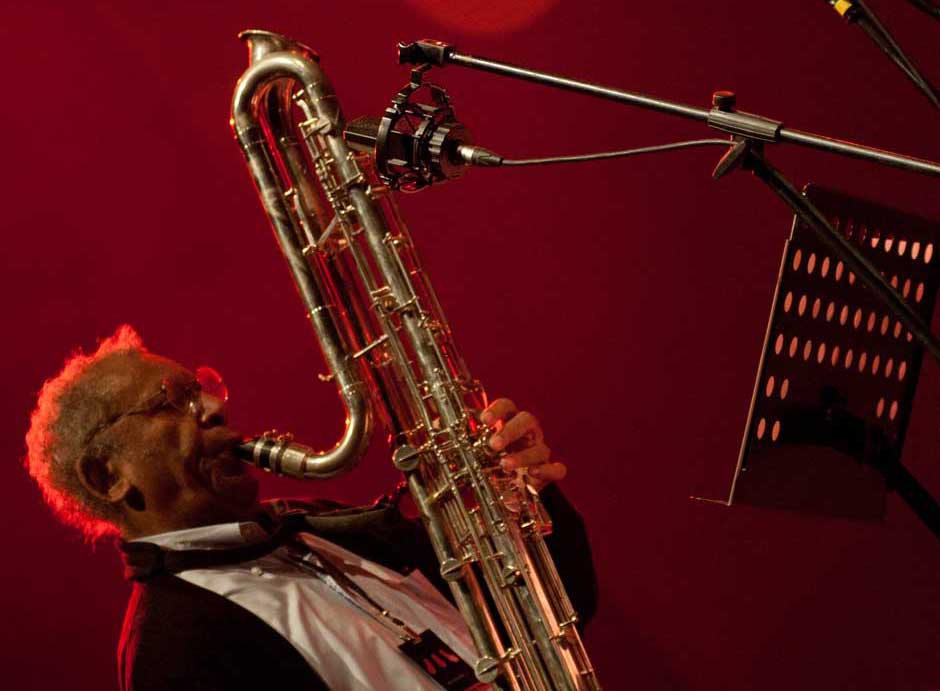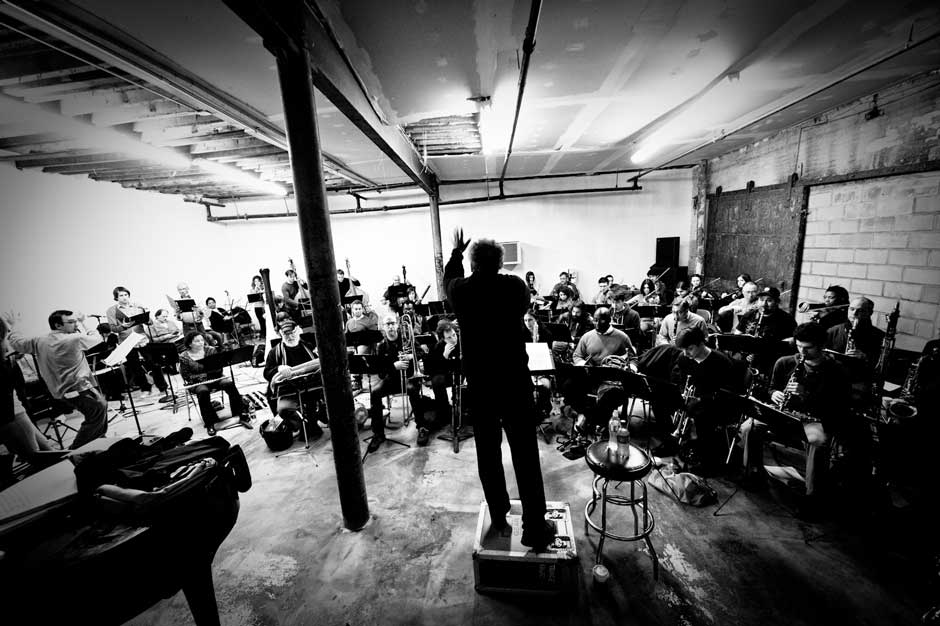Though Anthony Braxton’s contributions to jazz have been substantial, he has spent the last three decades on the genre’s fringes. A MacArthur Award-winning saxophonist, composer, and teacher, Braxton has released a number of acclaimed works, including For Alto, the first album for unaccompanied solo saxophone ever recorded, and has for years been a leading proponent of merging avant-garde jazz with contemporary art music. Yet when I spoke to him in early April, Braxton told me he was surprised to be included on the list of “Jazz Masters” honored by the National Endowment for the Arts, in January. And, once again, he was already looking ahead: more eager to talk about Richard Wagner and Karlheinz Stockhausen, influences on his own opera-cycle in progress, Trillium. The latest work in what he calls his “opera complex,” Trillium J (The Non-Unconfessionables), will have its premiere this month at Roulette in Brooklyn, from April 17 to April 19. The weekend before, Braxton will also play saxophone in performances at the same venue with a chamber orchestra and with a nonet that includes Ingrid Laubrock, Nate Wooley, and Mary Halvorson.
The jazz community has not always been supportive of Braxton’s stylistic hybridity, nor his conspicuous engagement with European high-modernism. Amiri Baraka once derisively described it as the “Tail Europe” school of jazz (though Baraka softened his critique in later years). At the NEA awards show at Lincoln Center in January, Braxton addressed this central tension of his creative life head-on: “For the last fifty years, my work has been viewed as ‘not jazz,’ ‘not black,’ ‘not contemporary classical music,’ my work ‘doesn’t swing.’… After a while, I got used to that. I got used to those perspectives and accepted it.” As if to prove the point, Braxton then presented a scaled-down, six-minute excerpt from Trillium J. The scene, in which one “Colonel Stanford” asks for the hand of a certain “Scarlet,” played like a Gone With the Wind-style courting ritual, though one blasted forward in time—the better for nuclear-warhead transfer to be a relevant point of discussion in dowry negotiations.
Yet while some members of the mainstream jazz world may have shunned him, Braxton has undeniably deep roots in the music. He has cited John Coltrane, Paul Desmond, and Warne Marsh as influences on his saxophone playing, and has throughout the years recorded a number of albums of jazz standards (sometimes with highly idiosyncratic results), including In the Tradition. But he has never limited himself to jazz. His first recorded solos drew from the free-jazz of Albert Ayler and Coltrane, the open spaces and outright silences of John Cage’s conceptual works—as well as the hypnotic motif-repetition and variation of early Philip Glass compositions. (Braxton’s landmark 1970 double-LP For Alto contained contained stretches dedicated to both Cage and Glass.) That Braxton would not merely improvise with these touchstones, but also build them into his writing, was in part the influence of a 1960s south-side Chicago collective called the Association for the Advancement of Creative Musicians. Cofounded by the pianist and educator Muhal Richard Abrams, the AACM required original compositional activity from its members. And Braxton’s collaborations with first-generation AACM players—such as the trumpeter Wadada Leo Smith and the violinist Leroy Jenkins—helped establish his reputation, both in America and Europe. By the early 1970s, Braxton was performing solo at Carnegie Hall and in the early Chick Corea group Circle. (Before Corea’s more commercial turn, the pianist could blitz right along with Braxton, note for experimental note.)
Braxton has been writing Trillium since the early 1980s, though the first commercial recording (four acts of the projected thirty-six-act work) was not issued until 1999. Every “lettered” opera generally consists of four discrete acts, each of which stands alone as a self-contained narrative, and runs approximately forty minutes in length. The letterings—Trillium M, Trillium J, et al—are not sequential, and can be reordered into new configurations by performers (or listeners). The opera-cycle’s acts are best thought of as sketches or Socratic-style dialogues. Characters recur, but their backstories and desires are recreated anew in each act (even within the same overarching multi-act “opera”). Sometimes, the Trillium universe deposits listeners in a boardroom, where marketing magnates are busy insulting the public; at other points, you’re traveling through space with a conquering race of arrogant intergalactic elites; in other moments, you’re looking at a child going off to college (while being privy to his parents’ fears about the widening chasm of inequality in America). As microtonal clouds amass and then disperse in the orchestra, Braxton’s singers enact their roles in his science fiction narratives, and deliver on his slapstick setups and ribald punchlines.
Braxton scholar Graham Lock, in his book Blutopia, sees “implicit racial connotations” in some of these dramatic worlds, where civic boundaries are policed based on popular misreadings of history—though Lock also notes that the composer has advised against too narrow a reading along these lines. “I feel totally connected to Africa, to Europe, to Asia,” Braxton told me. “My work is not an ethnic-centric anything, or idiomatic-centric anything. But rather I’ve tried to learn from the great men and women who have made it possible for me to think about these things. Including, of course, Stockhausen and Sun Ra.”
Advertisement
Though individual coups de theatre abound in Stockhausen’s Licht (“Light”) cycle of seven operas, those works are also built on a largely daft cosmology. When I spoke to Braxton about the clear influence of Licht on the Trillium cycle, he professed his love for Stockhausen’s operas—even as he acknowledged some of their flaws. “I love the music—but listening to the CDs, I don’t get a sense of the real storyline,” he said. “And for me this aspect of Stockhausen’s Light is… complex. I have found it difficult to listen to one opera from beginning to end, in CD form. And the difficulty for me involves not being able to understand the poetic intent of the operas.… And so what I’ve tried to do in responding to the Light operas is to first create a fantasy story base, and from there, I can open it up and perform it in a classical way, later change the instrumentations, later, bring two and three Trilliums and put them together. This kind of thing.… But I always learn from Stockhausen.”
It’s taken Braxton several years to see initial stagings of some of his most ambitious music-dramas, but he doesn’t seem to resent the process. “As a young guy, it was always clear to me that my experience would probably be complex,” he told me. “Not only the fact that there would be no money being made from this, but rather as an African American with universal impulses, I was a ripe target for misunderstanding, going all the way back to the 1960s. So I wasn’t so surprised, in the end, by the nature of the struggle. In fact, I had gotten used to the nature of the struggle. But it seems to me, and it seemed to me then, that, at some point, the African-American community, the European-American community, all of our various communities would have to start looking for—how can I say it—that which has not been there.”
Selected recordings from the Trillium cycle
In this clip from Trillium M, you can hear the Second Viennese School influence at work in the music—both in the sounds coming from the orchestra pit, as well as in the vocal writing for a character who is tasked with policing a checkpoint, and who bars another singer entry with the words: “I’m sorry sir! You are not qualified to enter here. There are no records of your history that we can find or support. This has always been the case with your people.”
Here Braxton inserts a brief, improvised duet between piano and trumpet, before the resumption of the orchestra’s participation.
In this scene from Trillium E, there is debate, among a group of cloned women, over what type of food to eat, which TV show to watch, which relative to call on the phone. The act concludes on an absurd note, as the clone-women begin to assess the desirability of different sexual positions in dispassionate, academic syntax. When the male scientist decrees that “the menu for tonight is… doggy style,” Braxton’s orchestra responds with a bit of side-eye commentary, in the form of an atonal “womp-womp.”
Braxton’s operas are usually played by a three-dozen-strong orchestra. The six-minute scene, presented at the NEA awards show, used a much smaller ensemble. The scene will be presented in its fully orchestrated version at Brooklyn’s Roulette.
Select compositions and performances from the first two decades of Braxton’s writing and performing life can be heard in our “Early Braxton” playlist on Spotify.
Anthony Braxton’s Tri-Centric Presenting Series, at Brooklyn’s Roulette, will take place April 10-12, and April 17-19. The second half will be devoted to the world premiere of Trillium J.




